








| Western Roe Deer (Capreolus capreolus (Linnaeus 1758)) |









|
|
Scientific name: Capreolus capreolus (Linnaeus 1758) Common name: Western Roe Deer Other names: European Roe Deer French name: Chevreuil européen Family: Cervidae Size: Total height: 1.20 meter; Shoulder height: 65 cm. Adult males weigh about 24 kg (15 to 30 kg), adult females weigh about 22 kg. Biotope: All woodlands, large forests of broad-leaved trees from plain to altitude up to 1000 meters, moor lands with broom and gorse, scrubland with Green Oaks, wetlands, bocages, plains. Food: In spring, leaves of many trees (Oak, Hornbeam, Maple, Dogwood, ...), a lot of grasses and some dicotyledons. In winter, ivy on trunks, bramble, acorns, beechnuts, and some cultivation (lucerne). Longevity : 15 years but most of the roe deers die before 11 or 12. Geographic area: All Europe, except Ireland and the large Mediterranean islands (Corsica, Sardinia, Sicilia). Eurasia up to China and North of Near-East. |
Only the males have antlers, which are lost in autumn. They have sandy red-brown fur in summer, dark grey fur in winter. They moult twice a year. The white rump patch is kidney-shaped on males and heart-shaped on females. |
| [To know more about the Western Roe Deer] [Next picture] [Top] |
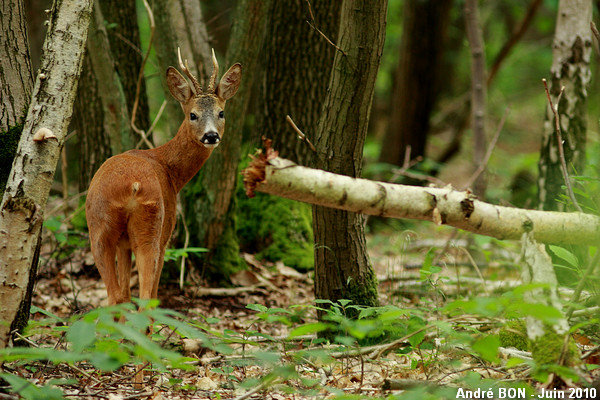
|
There is no hunting in this forest of the suburb of Paris. Western Roe Deers are used to seeing walkers passing by and the approach has been rather easy. |
| [To know more about the Western Roe Deer] [Next picture] [Previous picture] [Top] |
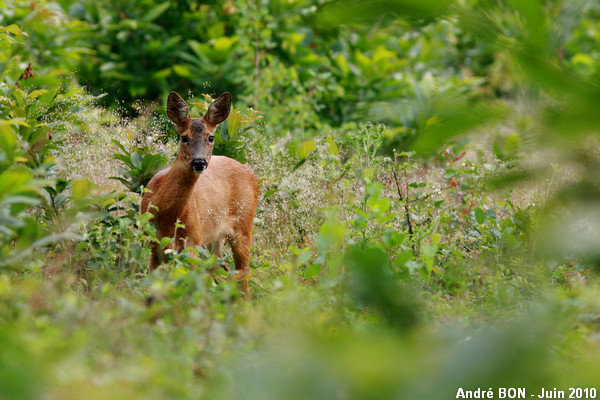
|
Western Roe Deers enjoy this forest area where trees have been cut some time ago. This is because they can find a lot of new tree shoots. The photographer also enjoy this area because there is no canopy to hide the sunlight. This is much easier to shoot pictures. |
| [To know more about the Western Roe Deer] [Next picture] [Previous picture] [Top] |
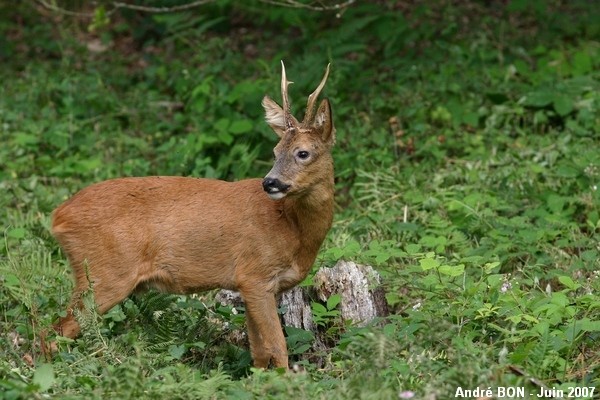
|
I have passed very close to this Roe Deer, riding my bicycle. I have stopped some hundred of meters after and came back walking slowly. Amazingly this Roe Deer didn't run away. |
| [To know more about the Western Roe Deer] [Next picture] [Previous picture] [Top] |
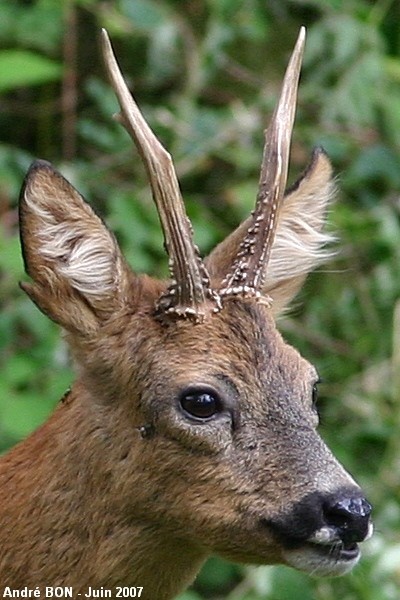
|
This is the first time I am able to come so close with no particular camouflage, about 10 meters from the Deer. |
| [To know more about the Western Roe Deer] [Next picture] [Previous picture] [Top] |
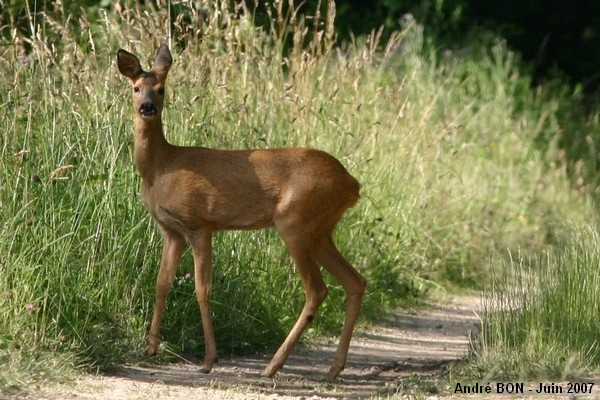
|
I crouched among the high grasses on the forest track side as soon as I saw this female Roe Deer. |
| [To know more about the Western Roe Deer] [Next picture] [Previous picture] [Top] |
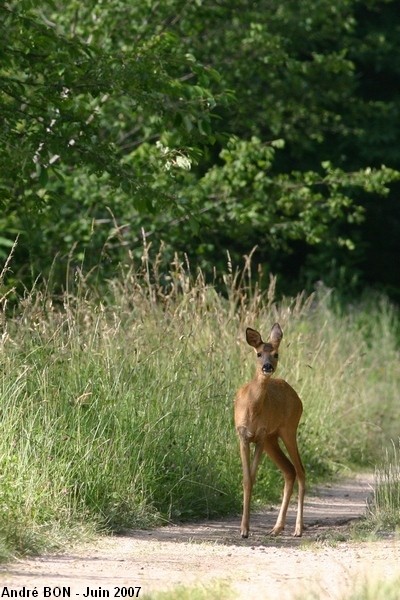
|
This female Roe Deer has just detected my presence, in a couple of seconds it will run to hide inside the forest. |
| [To know more about the Western Roe Deer] [Next picture] [Previous picture] [Top] |
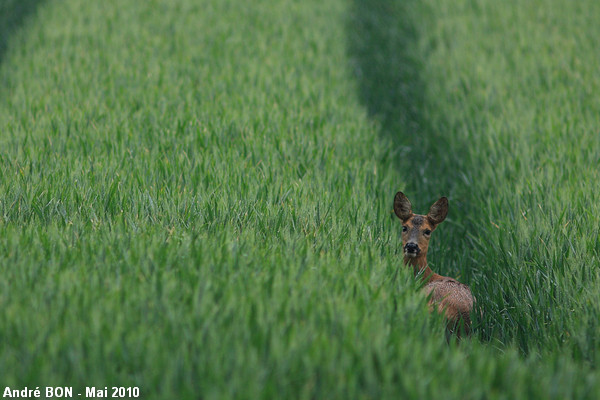
|
Here is the female Western Roe Deer of 6:30 pm. I have seen this female Western Roe Deer on a woodland edge while I was training for my annual marathon. It was about 6:30 pm. I came back to the same place two days after at the same time of the day. The Western Roe Deer was arriving at the same time too and I had a very nice photo session. |
| [To know more about the Western Roe Deer] [Next picture] [Previous picture] [Top] |
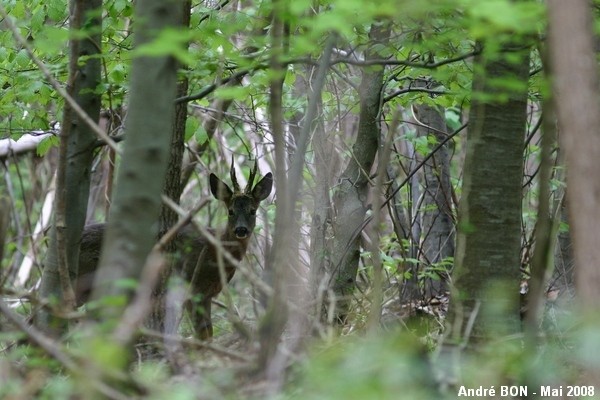
|
In this region, Western Roe Deers hide in the forest during the day and visit cultivated areas during the night. |
| [To know more about the Western Roe Deer] [Previous picture] [Top] |
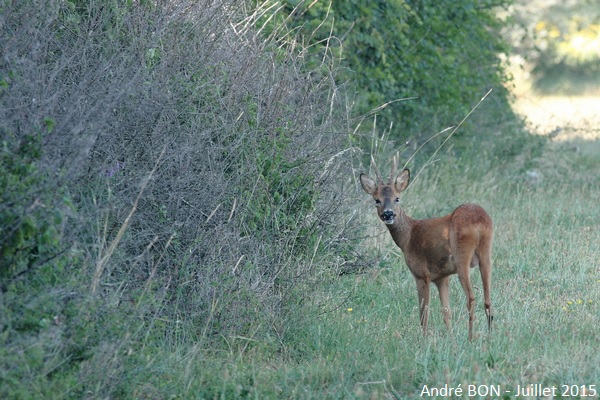
|
I have shot this picture from my car. This is an easier way to approach. |